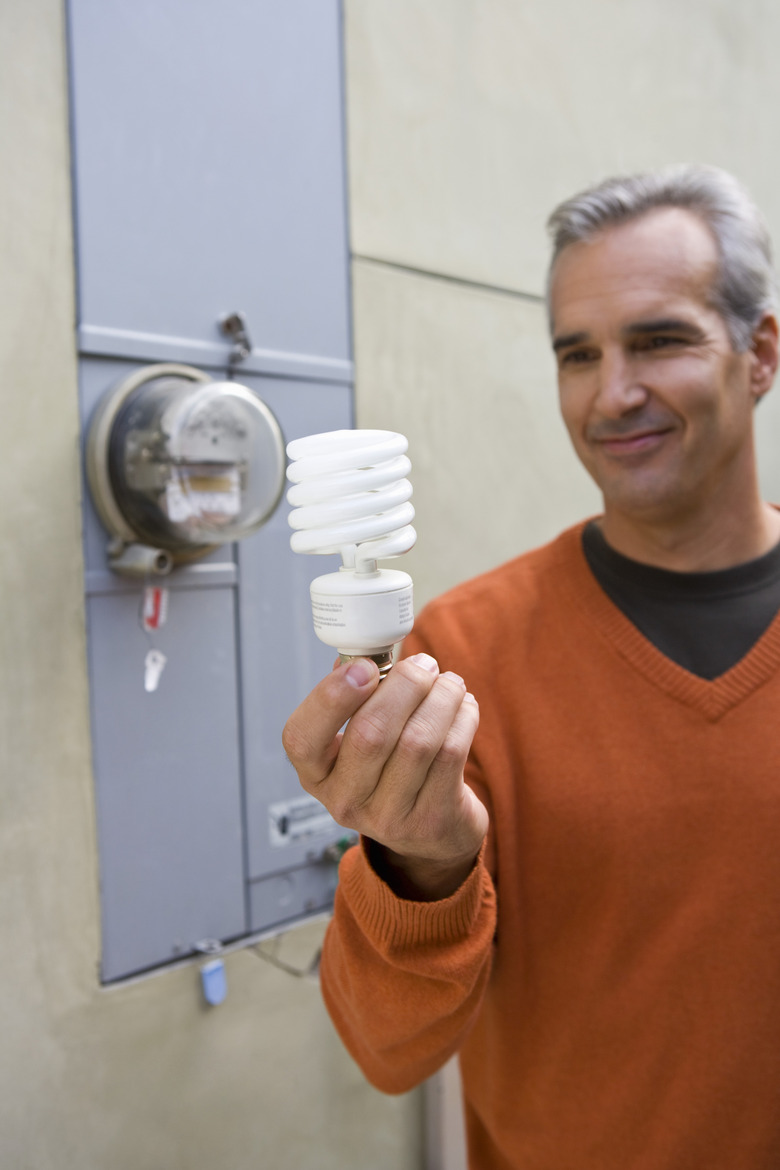Energy-Saving Light Bulbs Pros & Cons
In an effort to save energy and reduce carbon emissions, many countries have increased their efficiency standards for light bulbs. In the United States, most manufacturers have stopped making standard 100-watt incandescent bulbs, as of 2013, with lower-wattage bulbs to follow by 2014. Consumers can opt for more efficient compact fluorescent, LED and halogen bulbs to replace the inefficient incandescents. These energy-saving bulbs have their own advantages and disadvantages to consider.
Save Energy
Save Energy
Energy-saving light bulbs produce a similar amount of light to incandescent bulbs while using a fraction of the energy. Wattage figures vary from manufacturer to manufacturer, but 100-watt equivalent bulbs may use about 70 watts in the case of halogen bulbs, and about 25 watts for LED and compact fluorescent light bulbs, or CFLs. This means that the bulbs are much cheaper to use, lower your electricity bills and lessen your carbon footprint. As a side effect, the lowered energy usage and more efficient conversion of power into light means that CFL and LED bulbs tend to put out less heat than other designs.
High Initial Cost
High Initial Cost
One major disadvantage of energy-saving bulbs is their cost. Replacing incandescent bulbs with energy-efficient alternatives can be an expensive proposition, at least initially. Energy Star-rated compact fluorescent bulbs to replace 100-watt incandescents may cost between $2 and $15 per bulb, depending on the manufacturer, while the first 100-watt LED bulbs cost as much as $50, according to the Associated Press.
Long Lifespan
Long Lifespan
While energy-saving light bulbs may cost more initially, these devices can pay for themselves through energy savings over a greatly increased lifespan. A typical incandescent bulb may last 1,000 to 2,000 hours before burning out. Compact fluorescent light bulbs have a lifespan approaching 10,000 hours, while LED bulbs could potentially last 25,000 to 50,000 hours or more before failing. The precise lifespan of a bulb depends heavily on usage patterns and environmental conditions, but consumers can expect to go considerably longer between bulb changes once they switch to energy-saving light bulbs.
Safety Concerns
Safety Concerns
One energy-saving design, the compact fluorescent, has raised safety concerns because of the materials used in its design. CFLs contain a small amount of mercury, enough to present a health hazard if the bulb breaks. In addition, when a CFL reaches the end of its lifespan, the electronics in the base of the bulb self-destruct as a safety precaution. This process can produce a puff of smoke and even scorch the plastic housing. In one notable case, poorly designed first-generation bulbs caused minor fires during this process.
Cite This Article
MLA
Kazmeyer, Milton. "Energy-Saving Light Bulbs Pros & Cons" sciencing.com, https://www.sciencing.com/energysaving-light-bulbs-pros-cons-5118/. 24 April 2017.
APA
Kazmeyer, Milton. (2017, April 24). Energy-Saving Light Bulbs Pros & Cons. sciencing.com. Retrieved from https://www.sciencing.com/energysaving-light-bulbs-pros-cons-5118/
Chicago
Kazmeyer, Milton. Energy-Saving Light Bulbs Pros & Cons last modified March 24, 2022. https://www.sciencing.com/energysaving-light-bulbs-pros-cons-5118/
